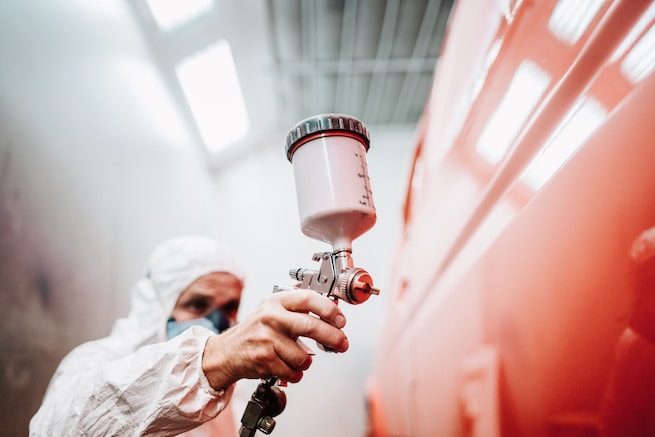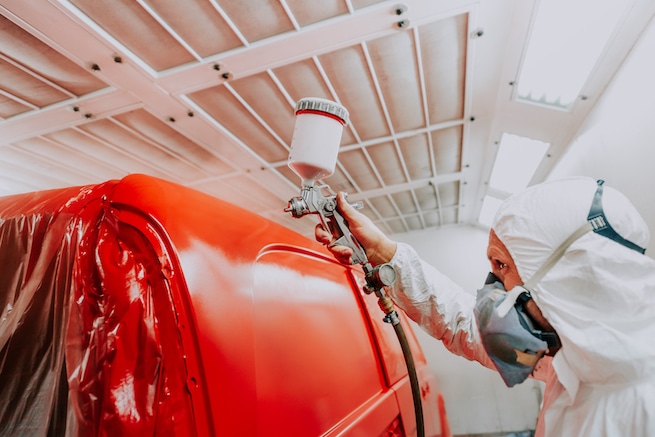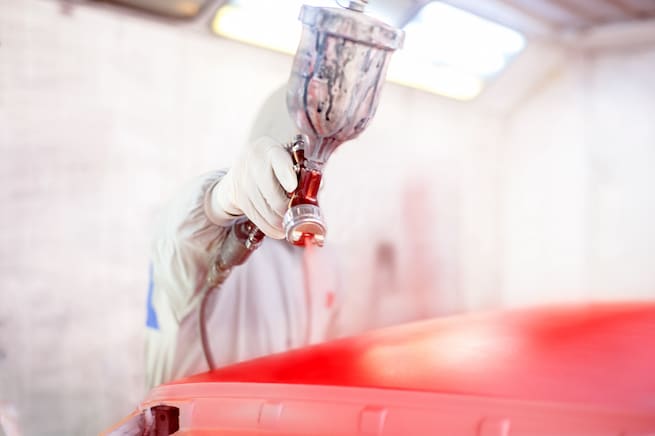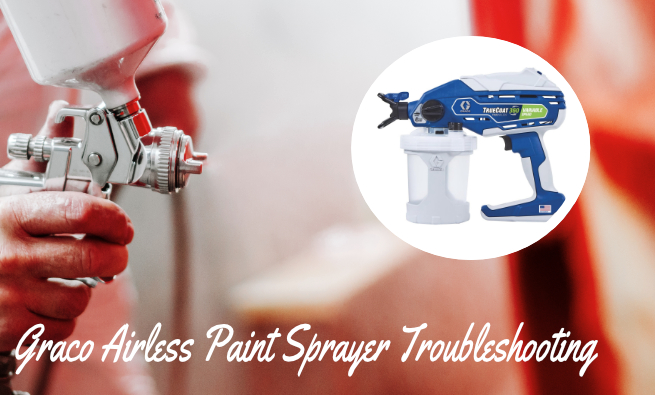How Long Does it Take to Paint a Truck? – Cost Of Paint Jobs
When it comes to painting a truck, one of the most common questions is: How long does it take to paint a truck? First, a primer coat is required for the car, and it will take a few hours for it to dry. Depending on the color coat, the amount of time it takes to apply it might vary. Lastly, the clear coat will require at least 24 hours before the paint shop can get your car ready.
However, one surprising fact is that a full-scale paint job on a truck can often take several days to complete, especially if there are additional preparation and detailing involved. The time it takes to paint a truck can be influenced by various factors, including the size and condition of the truck, the complexity of the design, and the type of paint being used.
In the past, traditional painting methods required several layers of primer, base coat, and clear coat, which extended the time required for the whole process. However, with advancements in technology, some modern paint systems can significantly reduce the time spent painting a truck.
For example, the use of high-quality paints and advanced application techniques can help achieve a quick and efficient paint job while ensuring a durable and professional finish.
Factors Affecting the Time to Paint a Truck

One important factor is the size of the truck. Larger trucks, such as commercial or industrial vehicles, will generally take longer to paint compared to smaller trucks. The surface area of the truck that needs to be covered with paint is larger, requiring more time and effort.
The condition of the truck’s existing paint is another factor to consider. If the truck has peeling or damaged paint, additional preparation work will be needed, such as sanding, filling in dents, and priming the surface.
The type of paint chosen for the truck also affects the time it takes to complete the job. Different types of paint, such as enamel, urethane, or acrylic, have varying drying times and application processes. Some paints require multiple coats or longer drying times between coats, which can prolong the process.
Furthermore, the complexity of the design or any additional customization requested by the owner can impact the time needed to paint a truck. Intricate designs or special effects, such as stripes, graphics, or metallic finishes, require more time and precision to achieve.
Preparation and Masking Before You Paint A Car
Prior to painting, thorough preparation work is necessary to ensure a smooth and durable finish. This involves cleaning the truck’s surface, removing any dirt, grease, or debris that may affect paint adhesion. Additionally, any imperfections or dents should be repaired, sanded, and filled in.
Masking is another crucial step in the preparation process. It involves covering areas of the truck that don’t require paint, such as windows, trims, and other delicate components, to protect them from overspray or accidental paint application. Masking requires attention to detail to ensure clean lines and prevent any unwanted paint on non-paint areas.
The extent of preparation and masking required will depend on the condition of the truck and the desired outcome. If the truck requires extensive repairs or has complex design elements, additional time will be needed for these preparatory tasks.
Moreover, the type of paint chosen also affects the preparation process. Some paints may require special primers or adhesion promoters, which add another step to the preparation phase. Additionally, if the truck is being painted a different color, careful removal of the old paint or thorough sanding is necessary to ensure proper adhesion.
Drying and Curing Time For Most Paint Jobs
Drying time refers to the time it takes for the paint to become dry to the touch, while curing time refers to the time it takes for the paint to fully harden and reach its maximum durability.
The drying and curing time can vary depending on factors such as the type of paint used, environmental conditions, and any additional drying techniques employed, such as using heat lamps or infrared drying systems. It’s important to follow the manufacturer’s recommendations regarding drying and curing times to ensure the paint fully sets and provides a durable finish.
During the drying and curing period, it’s crucial to avoid any contact with the painted surface to prevent smudges, scratches, or other damage. Proper handling and care are essential to maintain the quality of the newly painted truck.
Overall Time Frame To Get Your Car Painted
The time it takes to paint a truck can range from a few days to a couple of weeks, depending on the factors discussed. For a standard-sized truck with moderate preparation work and a full paint job, the process can generally be completed within a week. However, more extensive customization, repairs, or the use of specialty paints may require additional time.
It’s important to consult with a professional auto body shop or painting specialist to get an accurate estimate of the time required for your specific truck and desired outcome. They can assess the condition of the vehicle, discuss your customization preferences, and provide a timeline based on their expertise and experience.
Now that you have a better understanding of the factors that affect the time it takes to paint a truck, you can make informed decisions and plan accordingly. Whether you’re looking to repaint your truck for aesthetic purposes or to give it a fresh look, taking the necessary time and care will ensure a high-quality and long-lasting result.
Truck Size Affects The Prepping Phase Of The Whole Car
The size of the truck is one of the key factors that determine the time it takes to paint it. Larger trucks have more surface area to cover, which requires more time for preparation, painting, and drying. Small trucks, such as pickup trucks, usually take less time to paint compared to large commercial trucks or semi-trucks.
Condition of the Truck And Amount Of Prep Work
The condition of the truck also plays a role in determining the time needed for painting. If the truck has existing paint that needs to be removed or repaired, additional time will be required to prepare the surface for painting. Surface preparation is essential to ensure proper adhesion and a smooth finish.
If there are dents, scratches, or rust on the truck, these issues will need to be addressed before painting can begin. Repairing these imperfections can add to the overall time it takes to paint the truck. It’s important to thoroughly inspect and repair any damages before starting the painting process to achieve the desired results.
Type of Car Paint That Is Going To Be Used For The Paint Job
The type of paint used for the truck will also impact the time it takes to complete the painting job. Different types of paint have varying drying times and application techniques. For example, some paints require multiple coats, while others may require specific drying conditions, such as heat or UV exposure.
If a truck owner chooses a new paint job or a specialized finish, it may require additional layers, intricate detailing, or special effects. These factors can significantly increase the time needed to paint the truck. On the other hand, opting for a standard paint color may reduce the overall painting time.
Skill and Experience of the Painter
The skill and experience of the painter also contribute to the time it takes to paint a truck. A professional painter with years of experience can efficiently complete the job within a shorter timeframe compared to a novice or DIY painter.
In contrast, an inexperienced painter may require more time to complete each step of the process. They may need to spend extra time learning and practicing the proper techniques, which can extend the overall time it takes to paint the truck.
Before you start your truck driver career it is important to consider the skill and experience of the painter you choose. Hiring a professional with a proven track record can save you time and ensure a high-quality paint job for your truck.
Average Time to Paint a Truck
While the time it takes to paint a truck can vary depending on the factors mentioned above, it’s helpful to have a general idea of the average time required. On average, painting a truck can take anywhere from a few days to a few weeks.
Average Time: 4-7 Days
The average time to paint a truck is around 4 to 7 days. This includes the time needed for surface preparation, masking, painting, drying, and any additional detailing or touch-ups. Keep in mind that this timeframe can be longer or shorter based on the factors specific to your truck.
Professional Auto Body Shop Paint Job Times

Most body shops take time to paint the entire car because of the amount of work involved in the process. However, some shops may offer faster turnaround times for urgent repairs. Each job will require an additional amount of time to complete. Depending on the complexity of the repair and the size of the vehicle,.
A few hours of body work will increase the overall time required for the paint job. This can result in a longer overall time frame for the repair. After putting so many hours into the paint job, the results will be worth it in the end. Each paint shop will make sure that they get the car completely covered and that the paint job is of the highest quality.
Don’t try to paint your own car if you do not have any experience, because it can lead to a poor finish and damage to the vehicle’s surface. Painting cars can be a complex and time-consuming process, and it’s important to have a professional do it to ensure the best results.
Average Time To Paint A Car Door

Your car’s paint job can take anywhere from a few days to a few weeks, depending on the complexity of the job and the level of detail required. To get the door of the vehicle painted, it can take anywhere from a few hours to a couple of days.
Depending on the number of color coats that the car requires, the time it takes to paint a car can vary. Multiple coats of paint are often necessary to achieve the desired color and finish. The more coats required, the longer the process will take.
Sometimes the insurance company will pay the total cost to paint a car if you get involved in an accident and need repairs. However, it is important to note that insurance coverage may vary, and it is best to check with your specific policy to understand what is covered.
Last Updated on: March 16, 2025


